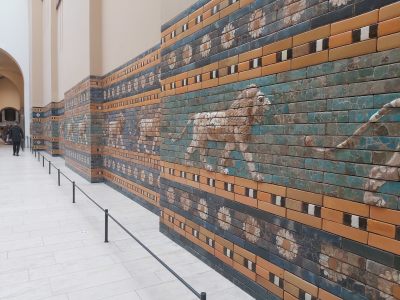
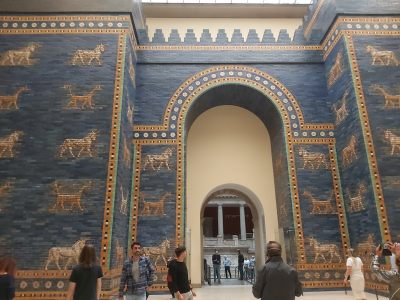
My first stop
was to the Pergamon Museum situated on Museum Island. Before I managed
to get
in I was sweating. Although I had bought a ticket from Get your Guide,
I
couldn’t find the barcode that would allow me to pass. In the end I
gave up and
went to get money from the locker. Suddenly the barcode appeared, and I
could
go in.
The highlight
of the visit was the Processional Way leading to the Ishtar Gate
opening to the
inner city. Built by order of Nebuchadnezzar II in the sixth century
BCE, even
today it is a magnificent sight. (This is the same Nebuchadnezzar who
destroyed
the first Temple in Jerusalem 586BCE). After WW I the amazing blue
glazed tiles
with lions, bulls and dragons were “reconstructed” in Berlin.


After exploring
the museum I went to the Neues Museum to see the bust of Nefertiti.
Since
photography of the bust is strictly forbidden, I took a photo of a
relief of Nefertiti, queen to
Akhenaten and their children. Akhenaten is most famous for moving
the
capital to Amarna.and introducing
a
monotheistic religion in Egypt that worshipped the god Aten. After his
death his religious reforms collapsed and
his
capital was abandoned.
Another
interesting artifact was this clay tablet written in cuneiform. It is a
rigorous training program for chariot horses written by Kikkuli for his
Mitanni
masters around 1400BCE

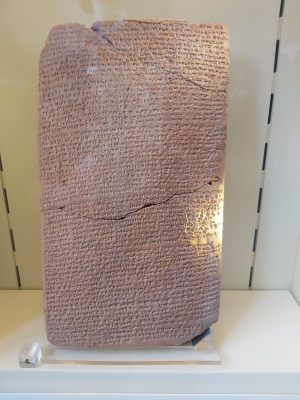
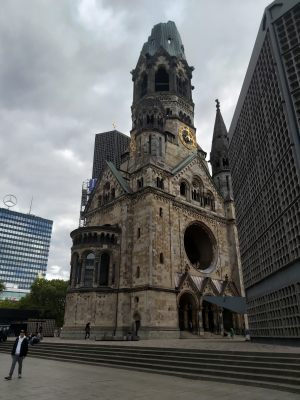
After lunch –
needing to rest my aching feet more than needing to eat – I went to the
Kaiser
Wilhelm Memorial Church. In 1964, a few months before I married
Anthony, my
mother took me on a tour overseas. Of our visit to Berlin two things
made an indelible
impression; a visit to this church was one of them. The
church was built at the end of the 19th
century and badly damaged in a bombing raid in 1943 during WW II. When we visited the church it was still in
ruins, and the damaged statue of Jesus was covered in blood-like red.
Today the
statue stands in pristine white. Unfortunately the people there were
too young
and when asked, they said it must have been graffiti. But it wasn’t.
The cross
to the right of the statue is the Coventry Cross of Nails taken from
beams in
the church in England after it was bombed in November 1940. It is part
of a
community and symbolizes reconciliation.
Following
another memory I went to The German Resistance Memorial Center. I have
a
distinct memory of meeting a blond curly headed woman at Natal
University where
it was whispered that her father had been part of an assassination
attempt
against Hitler. Unfortunately I can’t recall her name and no-one else
seems
aware of her. And I did not know to ask further then.
It seems that
there had been some 42 unsuccessful attempts to assassinate Hitler.
George
Elser a factory worker, hoping to stop the war placed a bomb at the
beer hall
where Hitler was to speak. But Hitler came early and left before the
bomb
exploded. The most famous attempt by an organized group of people led
by von Stauffenberg
placed a time bomb in a suitcase below a table where Hitler was to
speak. The
briefcase was inadvertently moved and the table prevented injury to
Hitler. All
attempts failed and he eventually took his own life on 30 April 1945 in
a
bunker in Berlin as the Russians approached.
That was enough
for one day – 10 kms walking and aching feet were too much.
The next day I
was up early and using the Berlin metro app I arrived at the
Gendarmenmarkt
Square and sat looking at the Berlin Concert Hall and the French and
German
churches flanking them. Intriguingly, our neighbor back in Kiryat
HaSharon’s
brother is a pianist and composer here in Berlin.
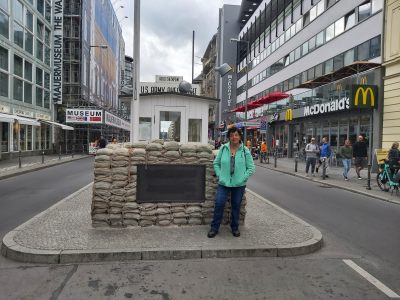
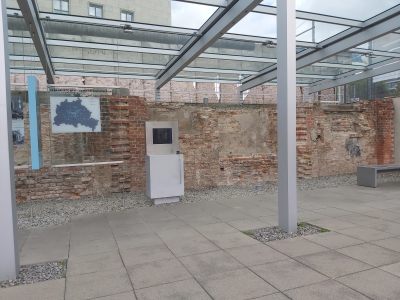
Now it was time
to go to the Reichstag and meet my granddaughter Dani and her friend
Lior who
were also visiting Berlin. Although entrance is free, numbers are
limited and I was delighted we could go together. The Reichstag
building
suffered an arson attack in February 1933 and went up in flames. Hitler
used
the fire to seize almost unlimited power. The glass dome was erected
after the
reunification of Berlin in 1990. There are two spiral ramps enclosing
the glass
core - one going up and one down. After we read the history of the
Reichstag
Dani and Lior ascended the ramps.
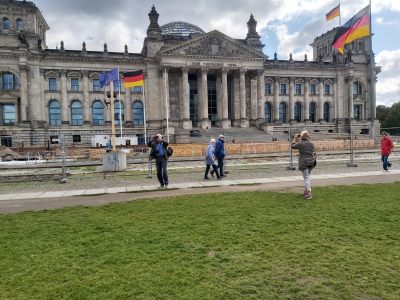
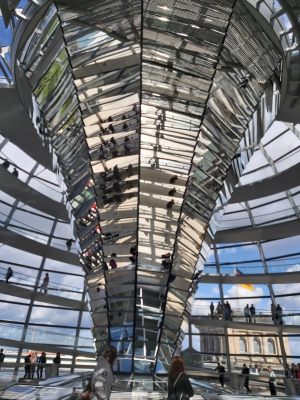
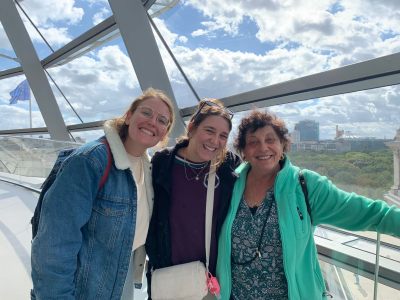
When they came
back we walked to the Brandenburg Gate. During the Cold War it was a
symbol of
the war and a divided city. It is now a national symbol of peace and
unity.
Below its arches we saw a sign ”Silence in the Brandenburg Gate” and
went
inside just to be quiet and thoughtful for a while.
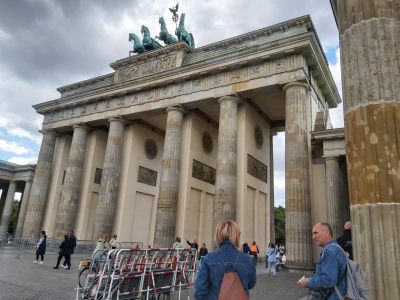

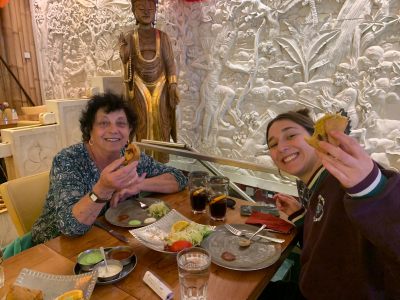
Looking
at the map I saw that my hotel, Museum Island and Gendarmenmarkt were
all in
what was East Berlin. 30 years later it is impossible to see the divide
except
on a map. After 2 full days I flew back to Warsaw to join Eitan and
friends at
the seminar they were giving.
See also: 2014 Visit to Berlin
Back to Doreen and Eitan's Home Page